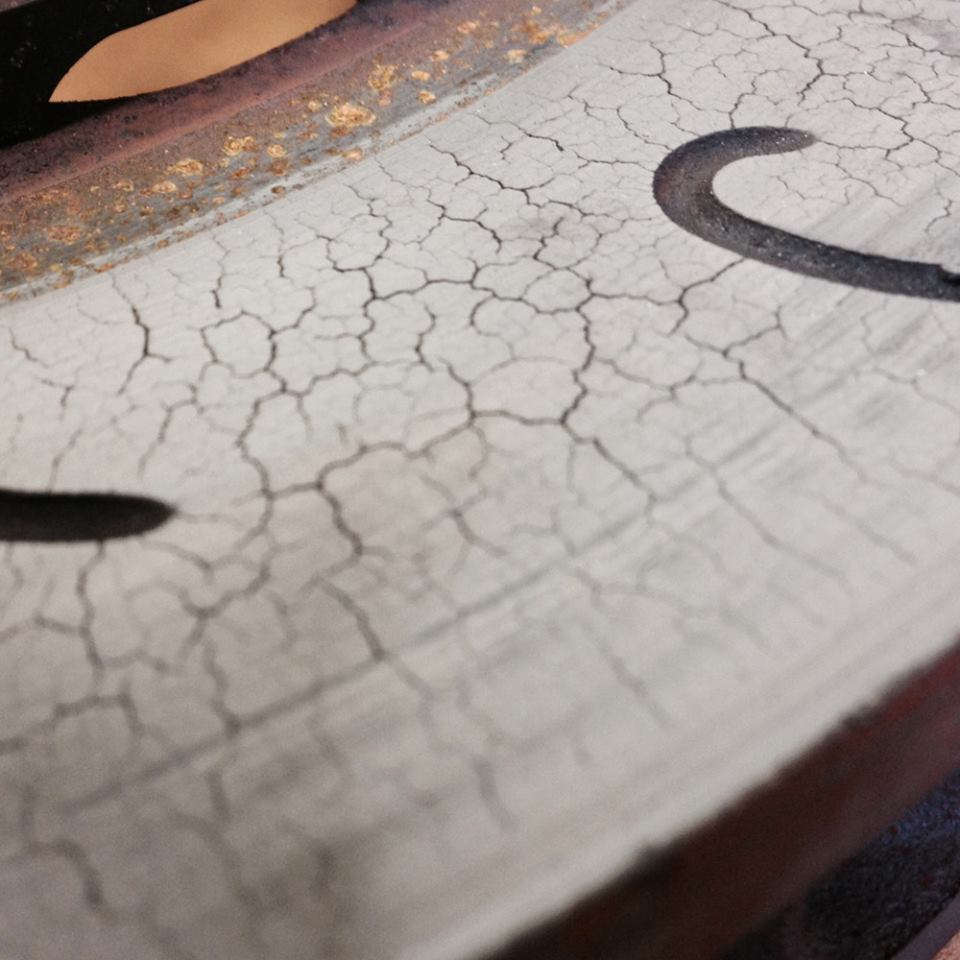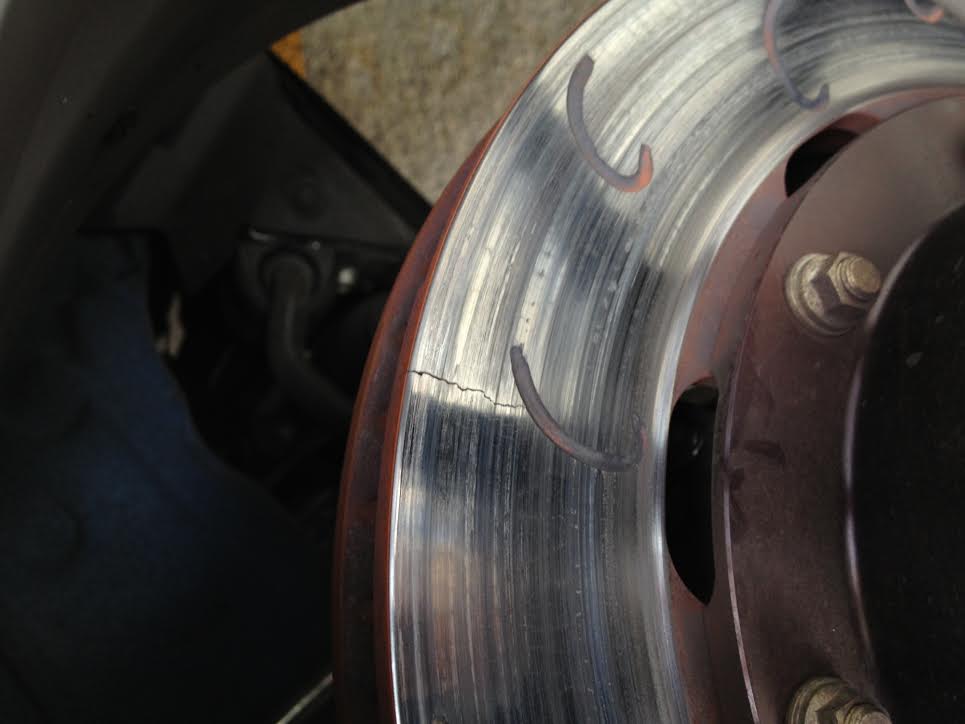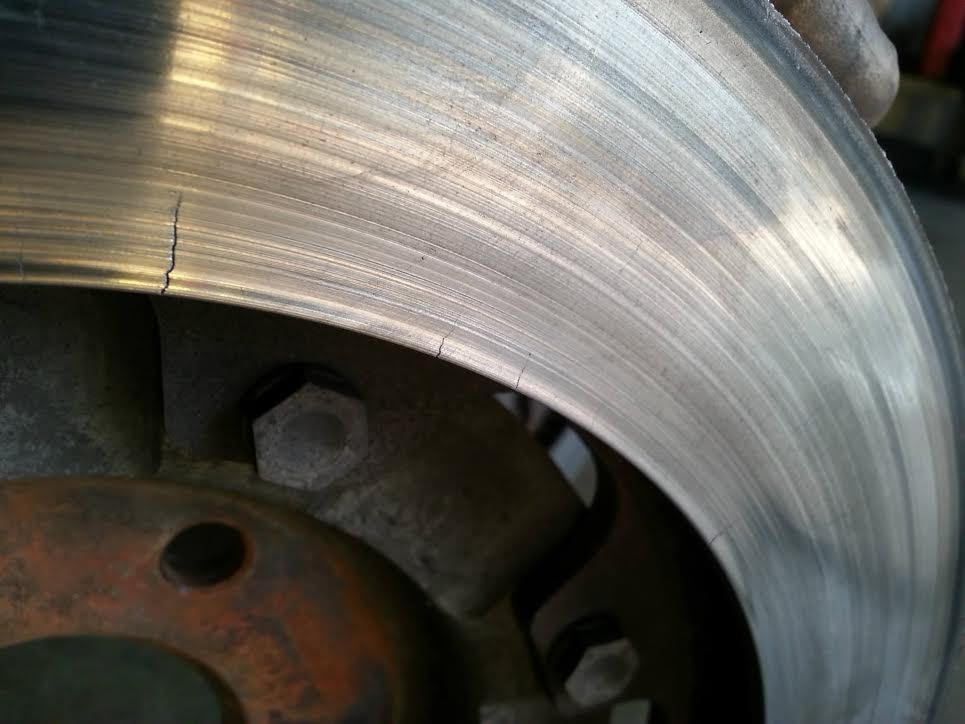
When is it time to replace my iron brake discs?
SOURCE: ESSEX PARTS
07.01.2016
We’re asked a lot of tough questions in the racing brake business, but one of the most complex is, “When should I replace my brake discs?” It is nearly impossible for us to give a firm “yes” or “no” on whether a disc is still usable, safe, how much longer it will last, etc. There are simply too many factors involved. For example, running three 20 minute sessions at Willow Springs in a Miata with a big brake kit installed is surely going to produce less incremental stress on a disc vs. running a single lap in a stock 991 GT3 RS at Road America. However, precisely quantifying that stress is extremely elusive…horsepower, weight, tires, aero, disc size, # of vanes, wall thickness, slot pattern, metallurgy, pad choice, driver experience, track layout, and many other factors all come into play….variables, variables, variables!
Since quantifying a disc’s remaining lifespan is next to impossible, there are some best practices that you can employ to formulate a reasonable disc replacement schedule:
- Be Responsible- It is the sole responsibility of the vehicle owner to decide when to replace their brake discs. You should never run a disc (or any component on your car for that matter) that you think is at all marginal, causes you any concern, makes you nervous, etc. Ask yourself if you would put your significant other or child in the car for some hot laps with that part installed. If there is any hesitation or the answer is “no,” don’t be a knucklehead and tempt fate. It’s not worth writing off an entire car or being injured over a couple hundred dollar disc that is nearing the end of its life.
- Be Realistic- Always keep in mind that brake discs are a consumable item. Just as with pads, fluid, and brake lines, discs do not last forever. Repeated trips to over 1,000°F fatigues the metal, and they will always eventually crack to the point of being unusable and/or unstable. In many cases a set of brand new iron disc rings is no more expensive than a set of race pads. You wouldn’t intentionally run a pad all the way down until its backing plate was shooting sparks on the disc face, so don’t wait until your discs are falling to pieces to replace them!
- Be Vigilant- One must keep a close watch on their brake discs at all times. You should be checking your brakes every time you check your tires or oil when you’re at the track (which should be every session).
- Be Prepared- Finally, it’s never a bad idea to keep a spare set of iron rings and attachment hardware on-hand at the track, particularly if you’ve been running your current discs for a while. Iron disc rings don’t age like fruit. If you keep them in the oil paper in their original boxes, they can sit virtually forever in as-new condition. It’s a lot more fun to install a new iron disc ring during lunch than it is to pack up shop, forfeit your entry fee, say goodbye to your friends, and start the long drive home from the track due to a disc failure.
“So What Am I Looking At?”
We don’t want you flying completely blind, so below we’ve posted some pics of AP Racing J Hook discs in various states of wear. While a disc typically goes through several phases of degradation, there is no guarantee that it won’t fail prior to going through all of these phases. In other words, a disc may appear as-new at the beginning of a track session, only to appear terminally cracked at the end of that same session. While that is not the norm, it is not necessarily indicative of a malfunction or flaw in a disc’s construction.
Crazing and Initial Heat Checks
The initial stages of disc use typically show hints of small heat checks in the center of the disc (sometimes referred to as crazing). It’s not uncommon to see these tiny heat checks after one day or even session on the track. They are a natural result of the iron expanding and contracting with the massive temperature swings experienced at the track.
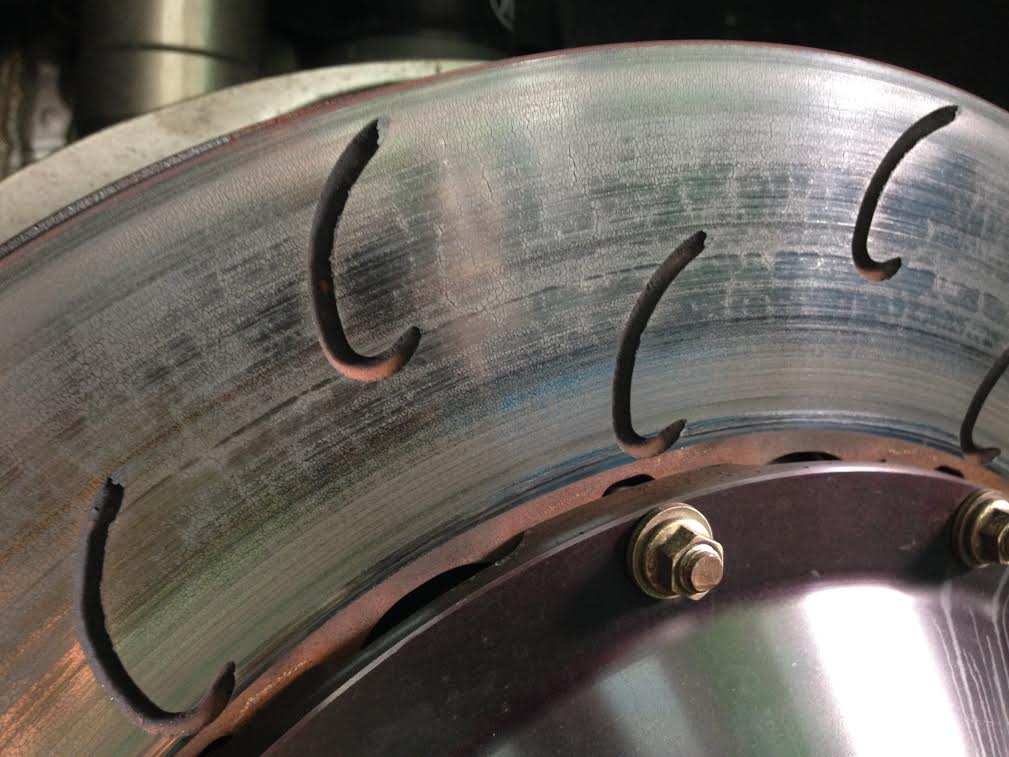
Expansion of Heat Checks
Over time those little checks in the center of the disc will grow larger and larger as shown below…
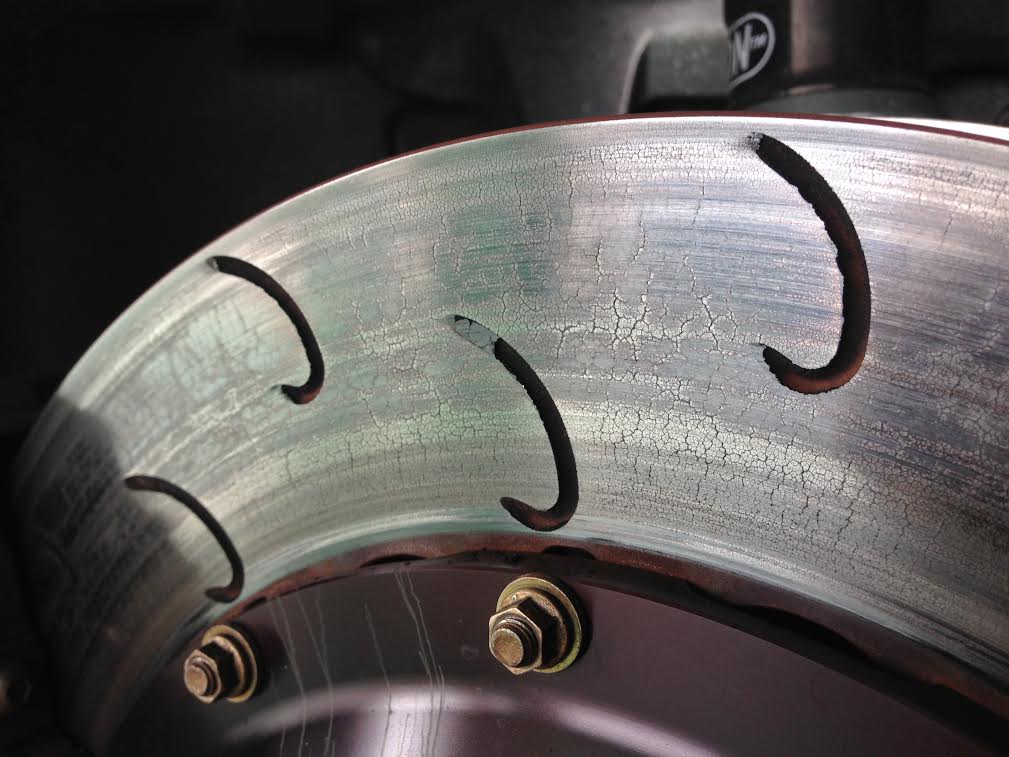
More abuse leads to more checks…
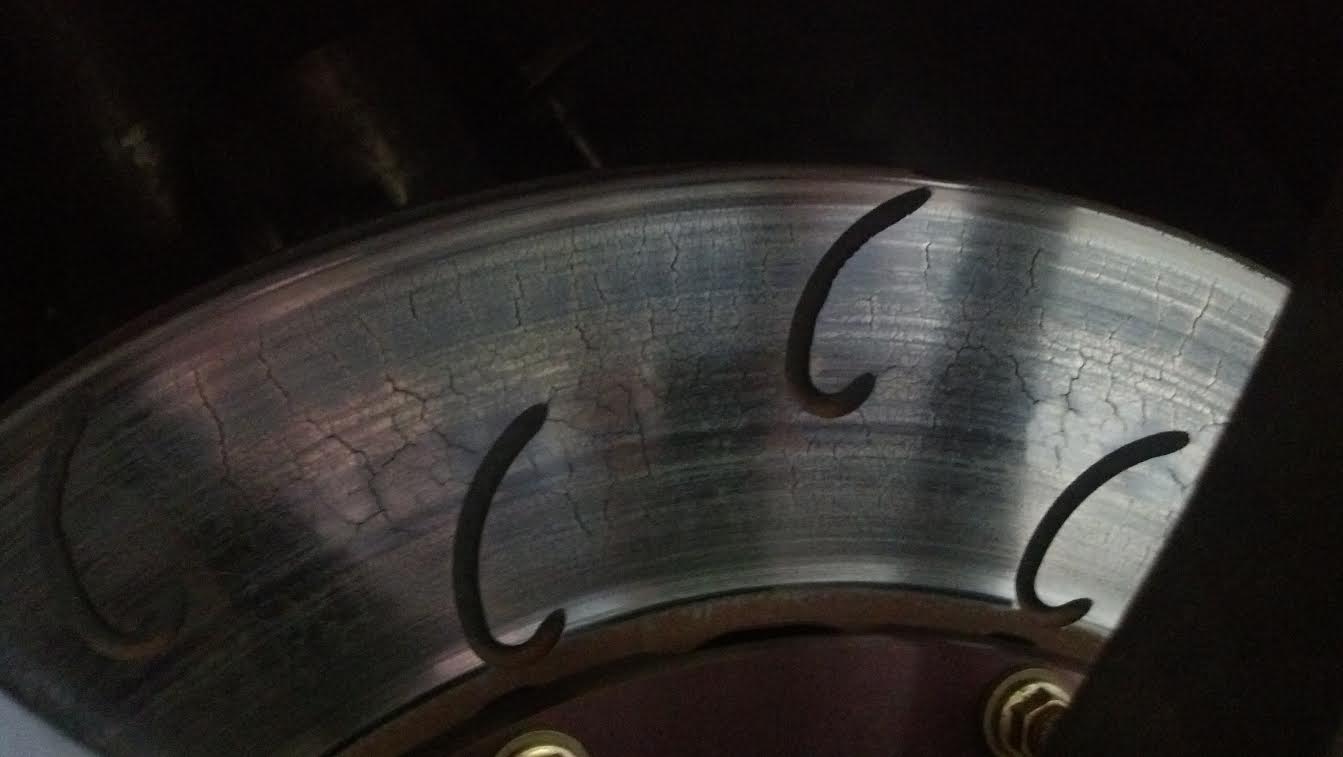
And more…
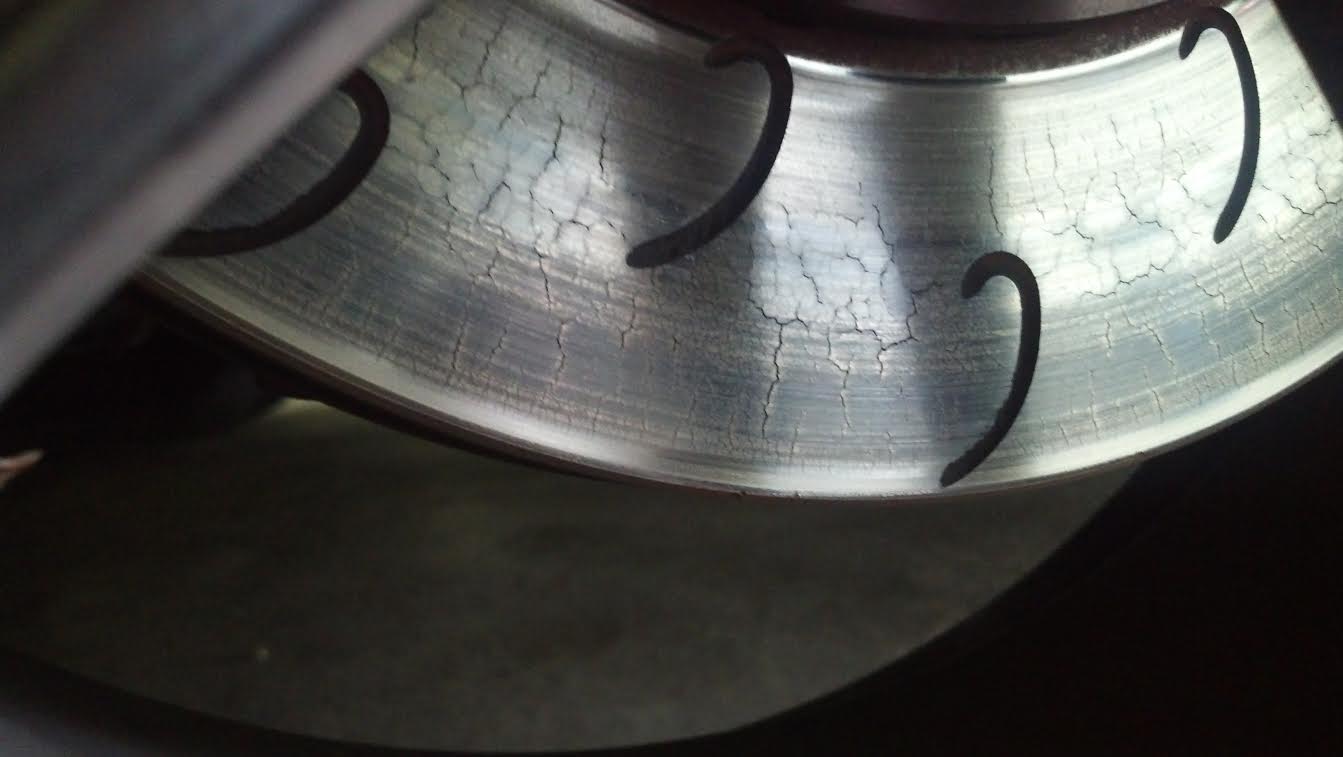
After enough heat cycles of expansion and contraction, the surface of the disc looks like a patch of arid ground.
Terminal Cracks
If you ever see any cracks on the outer edge (OD) and/or inner edge (ID) where the disc attaches to the hat, then you should immediately replace the iron ring. If any cracks in the disc face appear to go the entire way through the disc face, the disc should be replaced immediately. Below are some examples of a terminally-cracked discs.
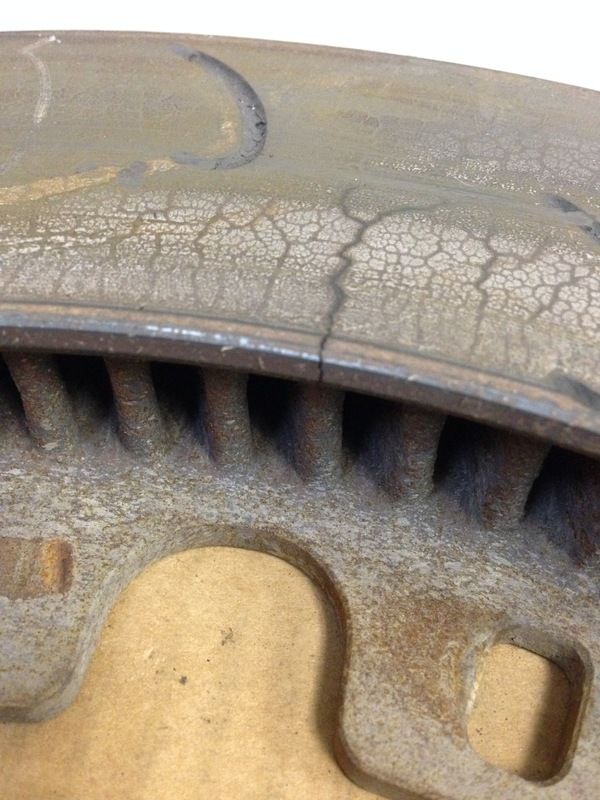
There are two halves to every disc!
Don’t forget about inner disc face! Some people only peek through the wheels and look at the outer disc face. That’s a big ‘no-no.’ You need to get your head inside the wheel and check the inner disc half (the part not attached to the hat) in case something like this is hiding from plain sight:
Groove in the Center of AP Racing J Hook Discs
It’s not at all uncommon for AP Racing J Hook discs to develop a groove or ridge in the center of the disc where the J Hook slots converge (see pic below). That groove is a result of the J Hook slot design. We see it all the time across all applications, and it doesn’t in any way impact performance.
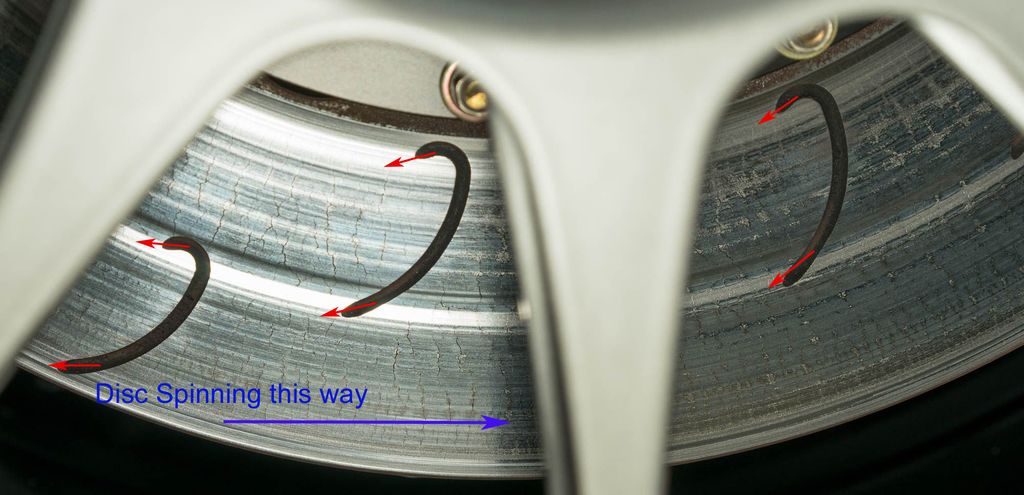
Here’s why it happens: If you notice where that ridge forms on the disc face, it’s at the termination of the J Hook slots. The pad material that gets scraped off the pad with each rotation disc rotation fills up the slots. If you think about the direction the disc is spinning, the ‘back’ of the J hook (the arced part) is leading into the pad. That pad material then exits at the tapered ends of the slots (see the red arrows in the image below). In the spot where that groove is, you’re getting pad material exiting from both ends of adjacent J Hook slots. In other words, at that spot in the center of the disc face, you have pad material exiting the ‘top’ of the J from the slot closest to the hub, and the ‘bottom’ of the J on the adjacent slot closest to the OD of the disc. As that pad material exits the slots, it rides along under the pad squeezing the disc, and digs a little groove into the disc face.
There are many thousands of J Hook discs in circulation at all level of motorsport, and we’ve never had a premature failure or performance problem in any way related to this type of groove forming on a disc. That includes winning the NASCAR Sprint Cup championship 8 out of the past 9 years, winning Le Mans 8 times since the year 2000 on the factory Corvettes, and a host of other championships. The groove looks a little funky, but that’s about it…nothing at all to worry about.
Minimum Disc Thickness
AP Racing does not have a published minimum thickness for their racing discs. Ninety nine percent of our customers will crack their discs long before they wear them thin. As a general rule of thumb however, if the J Hook slot pattern is mostly worn off the disc face, then it’s definitely time to replace them.
If you would like us to contact you regarding brakes/rotors for your application, let us know!
[contact-form][contact-field label=”Name” type=”name” required=”true” /][contact-field label=”Email” type=”email” required=”true” /][contact-field label=”Website” type=”url” /][contact-field label=”Message” type=”textarea” /][/contact-form]

